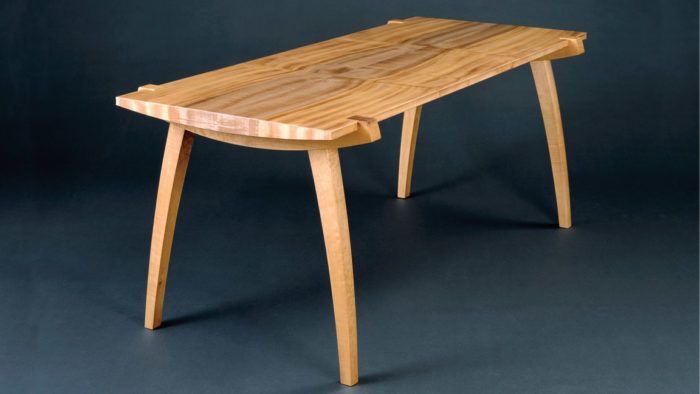Designer’s Notebook: The Dynamics of Designing
As a teacher of three-dimensional design, Aaron Levine has learned there is a wide spectrum of pathways for creating something from nothing
As a teacher of three-dimensional design, I’ve learned there is a wide spectrum of pathways for creating something from nothing. Every craftsperson or artist embodies a unique blend of attributes that contribute to their design method. Some designers operate on an intellectual plane while others leverage their emotions. And designing is a dynamic process, not a static one. At times, it can feel overwhelming because it involves a multi-dimensional array of elements including form, function, expression of ideas, engineering, aesthetics, and technical proficiency. These are all connected. If the form of a piece is changed, the engineering might be affected, which might alter the function. To orchestrate this chorus of considerations, it’s essential to have a clear understanding of what one wants to express. When you achieve that, it can become the guiding principle that informs every design decision. This approach to design requires awareness, discipline, and mindfulness, but it allows you to create a body of work that is uniquely yours.
A Harmony of Opposites
For me, writing is both easy and difficult at the same time. It requires an inward voyage to achieve an outward destination. When I made this writing table, I chose to reflect that duality in the design, juxtaposing opposites in an attempt to create visual balance and beauty. Writing itself is a distillation of ideas, so I kept the elements to a minimum.
By wrapping luminescent curly Oregon myrtle veneer over the simple slab of the top, I contrasted a rich surface with a basic sculptural form, aiming to achieve a complementary harmony. In curving the legs and the stretchers and the underside of the top, I wanted to give the impression that the table is being affected by gravity, yet at the same time seems light and sprightly. I designed the legs and stretchers as an homage to the Japanese Torii gate, which marks the division between the sacred and the profane, a portal between two seemingly opposite worlds. I joined each pair of legs to its stretcher as one structural unit and fitted them into the top so that they appear to grasp the slab of the tabletop; with the book-matched veneer seeming to spill in a waterfall over the ends of the table, this created the confluence of two more opposing forces: strong connection and flow.

Inspired by the Human Form
When I decided to make a jewelry box for the Northwest Gallery of Fine Woodworking’s Annual Box and Container Show, I asked myself, “What do I want to express with this object?” I considered jewelry itself and the many ways it is used and perceived: as a decoration of the body, as a marker of commitment or status or friendship, as a talisman, or simply as a form of wealth. What resonated most with me was jewelry’s ability to augment the human form, so I chose to make a box that would reference the sensuality of the body. With this intention clearly in mind, I had the simple mechanism I needed to make each design decision: “Does this element enhance the box’s expression of the sensuality of the human form?”
Looking at the front of the jewelry box, one might see the swollen curves of the hips in its hand-planed and block-sanded sides. Other sensual curves can be found at the base of the box and where the insides of the box are coved. And in the upward-angled ends of the top, perhaps the form of a waist. If I had decided to make the box about the preciousness of jewelry, I might have used a rare or highly figured wood. Instead, I chose Alaskan yellow cedar, because I knew its fine grain would not compete with the shape of the box—and because it is very soft to the touch.

Animal Instincts
I designed this chair to pair with a table that has talon-like legs. I decided the chair, too, should have an animal-like bearing. In keeping with that, I gave it a slightly crouching stance, so it appears poised for movement, with its two back (hind) legs appearing much stronger. The legs are all complex curves, rasped out by hand, that seem to flow into each other. I selected European pear for the chair because it’s an outstanding carving wood, and because its homogeneous color and grain would not distract from the curvilinear forms. I intended the interplay of sensual curves and sharp edges in the chair legs to convey a sense of skin covering bone—something like the way it’s seen on a person’s shin. Similarly, at the front of the seat the calf leather is stretched over two protrusions, creating the sense of skin over structure.
More on FineWoodworking.com:
- Designer’s Notebook – Kumiko coffee table
- Designer’s Notebook – Better Built-ins
- Tips for Designing and Being Inspired
Fine Woodworking Recommended Products

Compass

Stanley Powerlock 16-ft. tape measure

Blackwing Pencils






















Log in or create an account to post a comment.
Sign up Log in